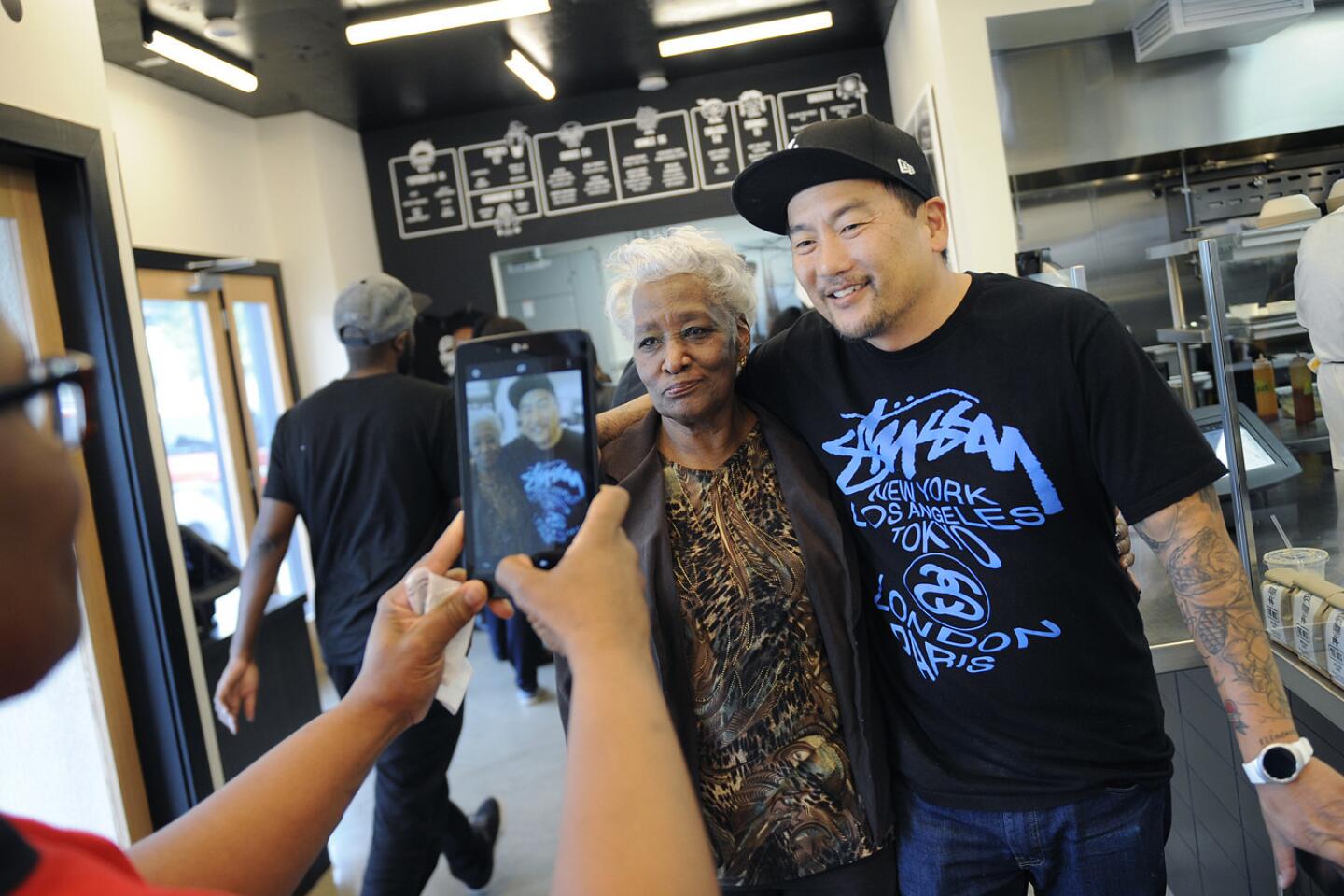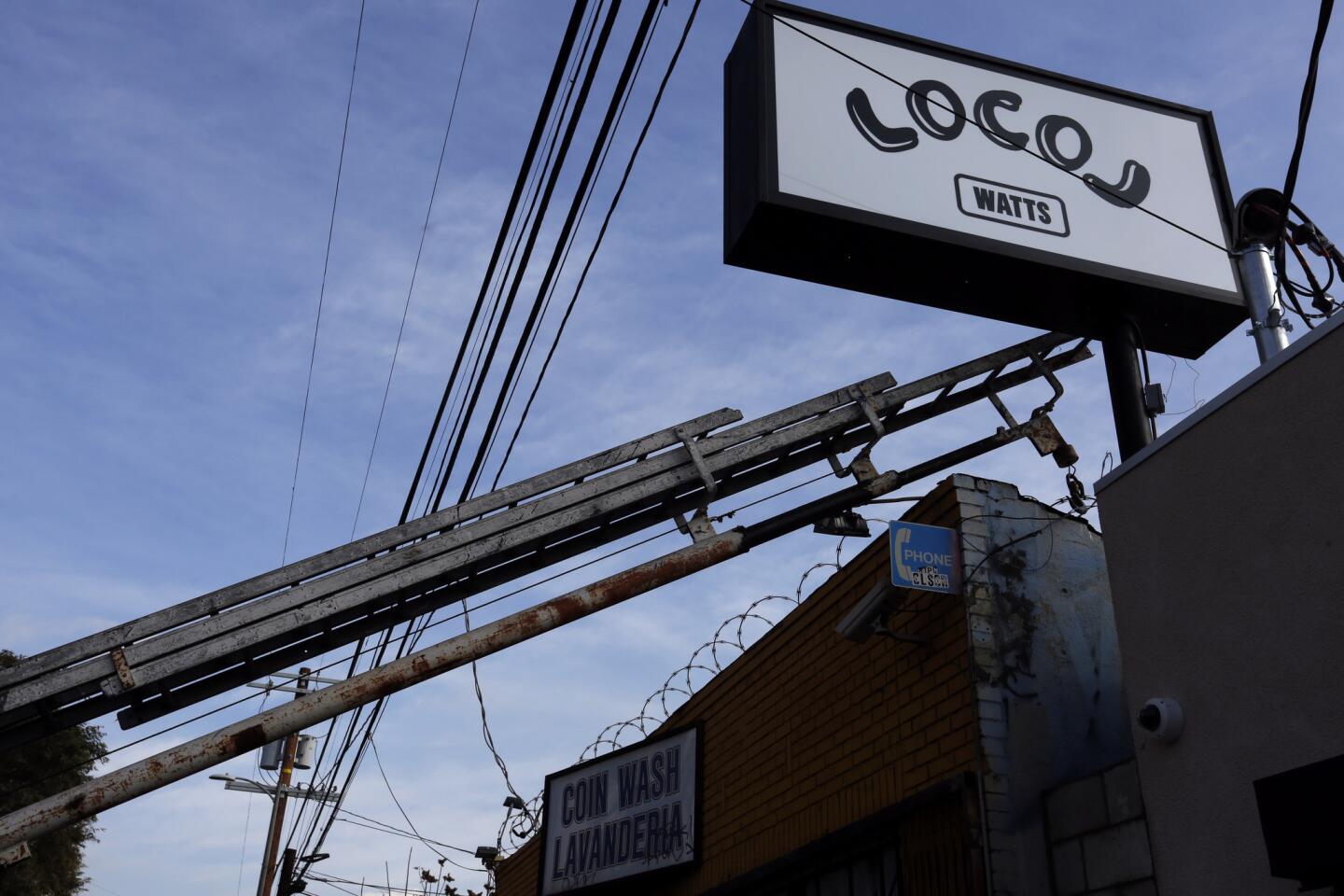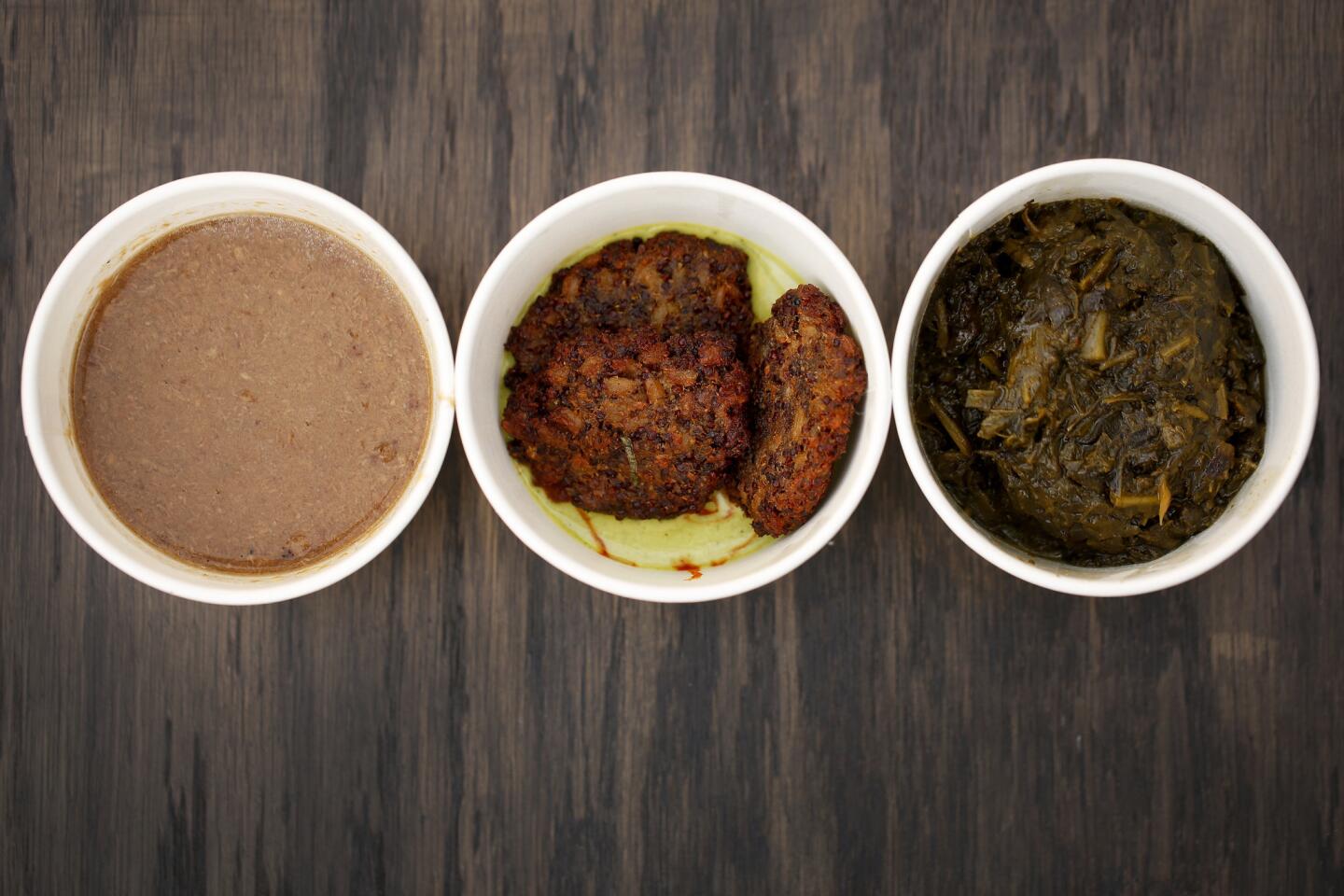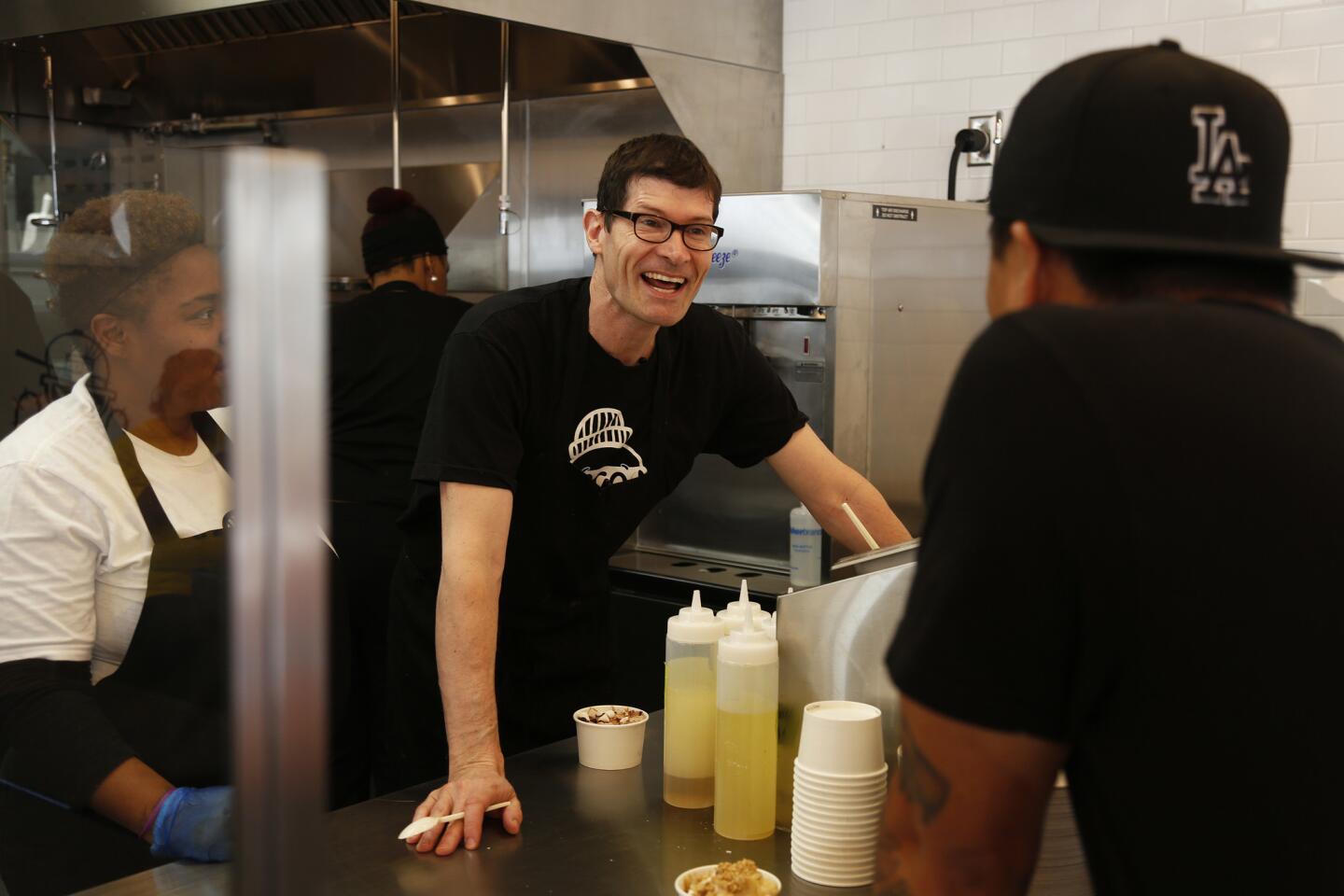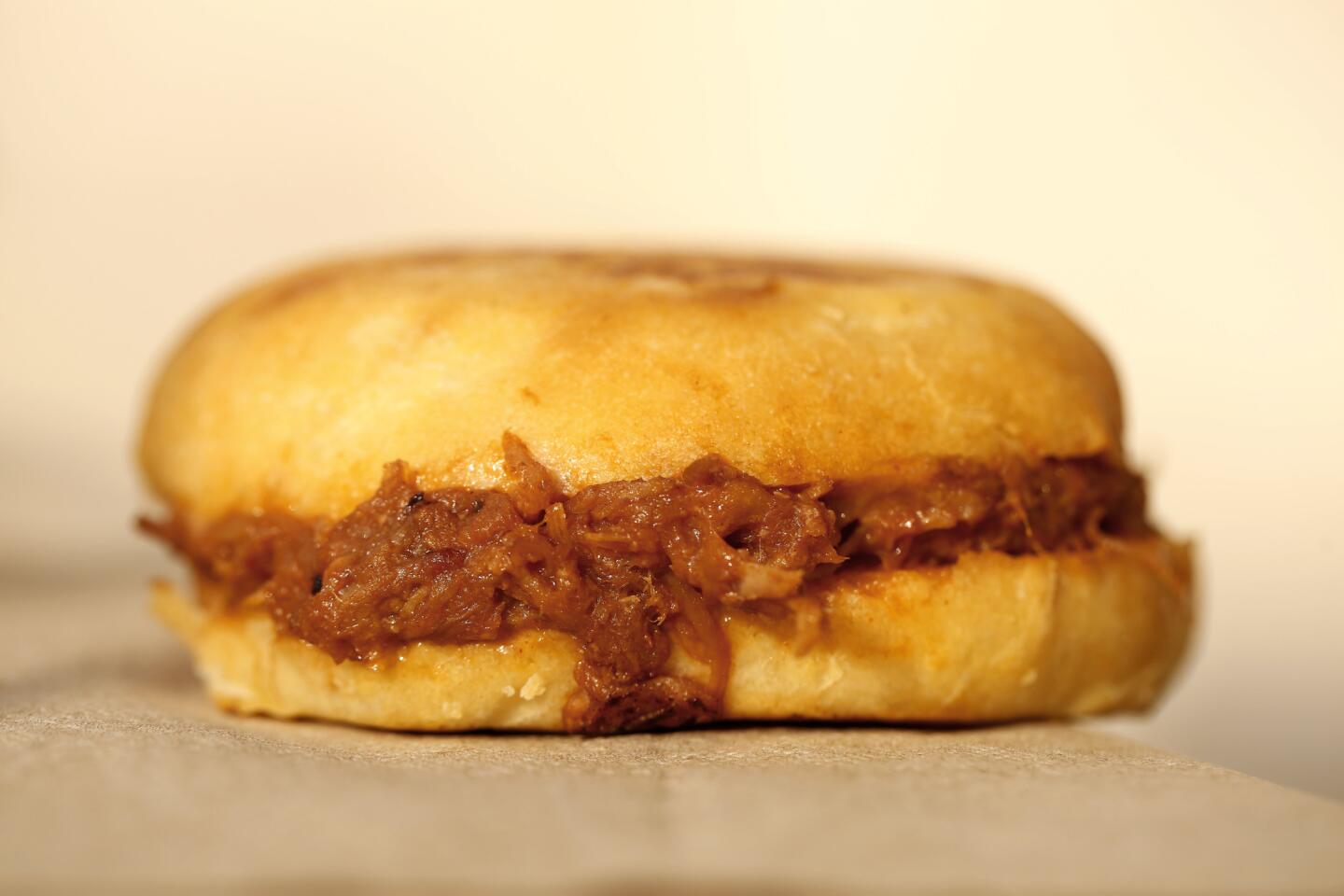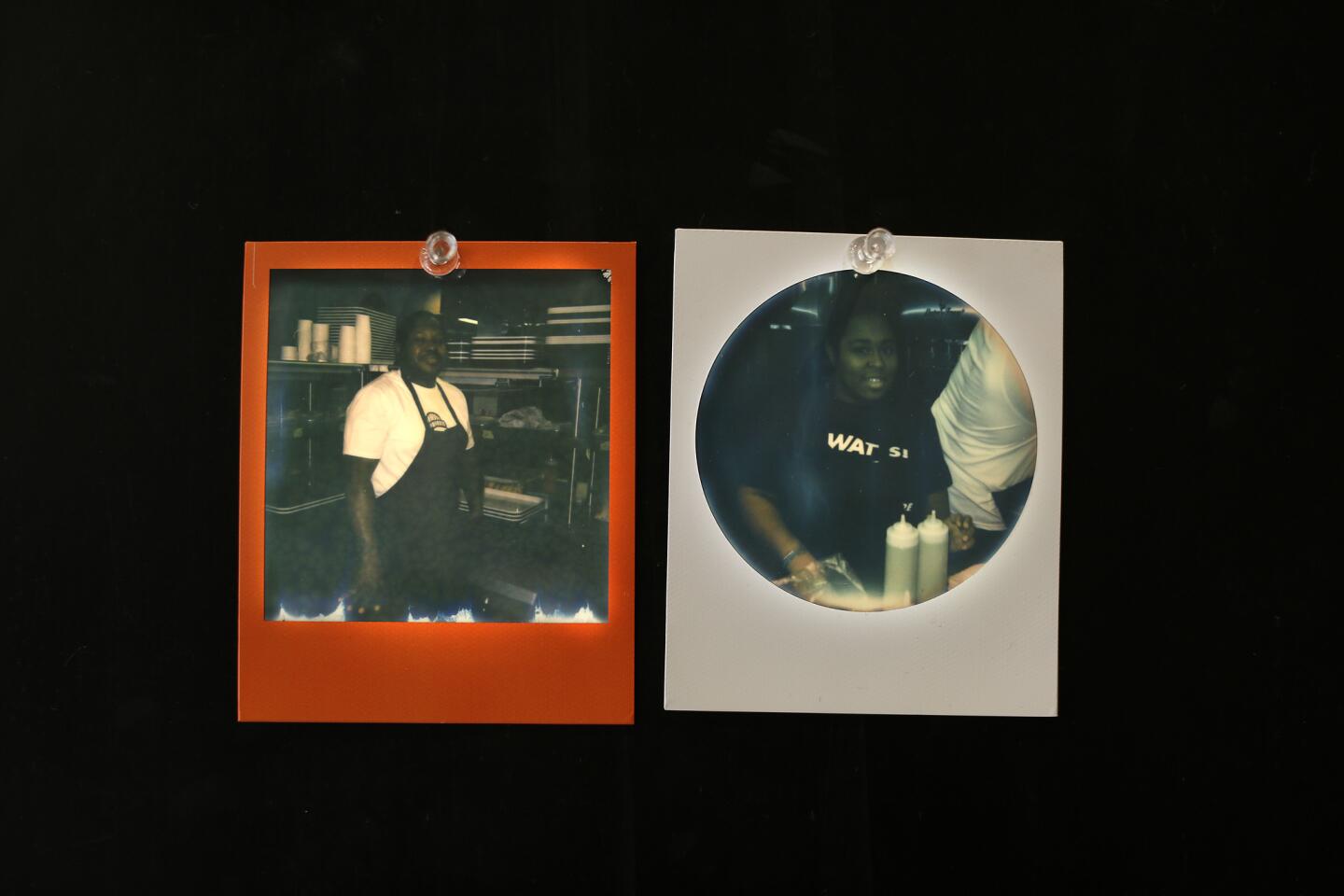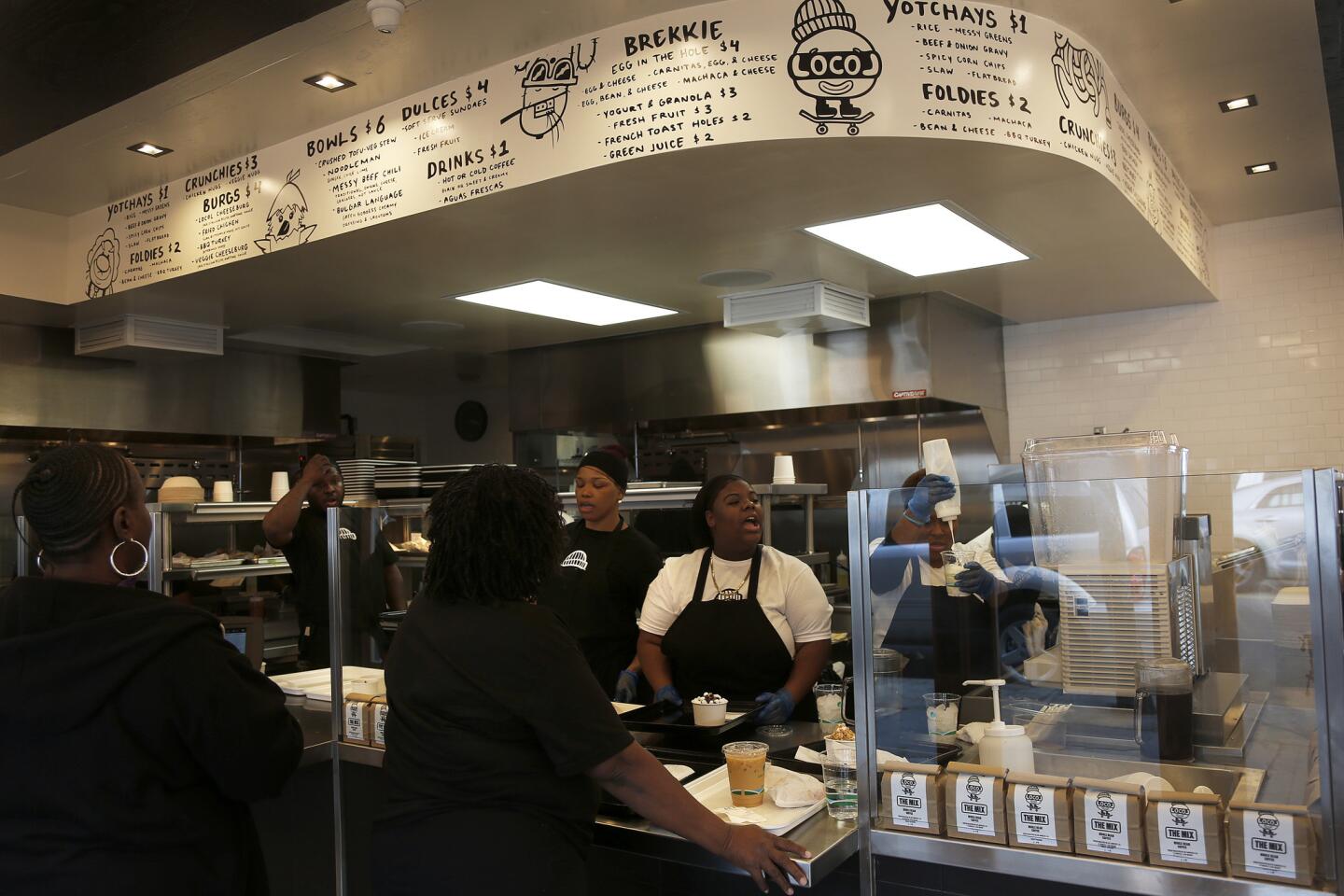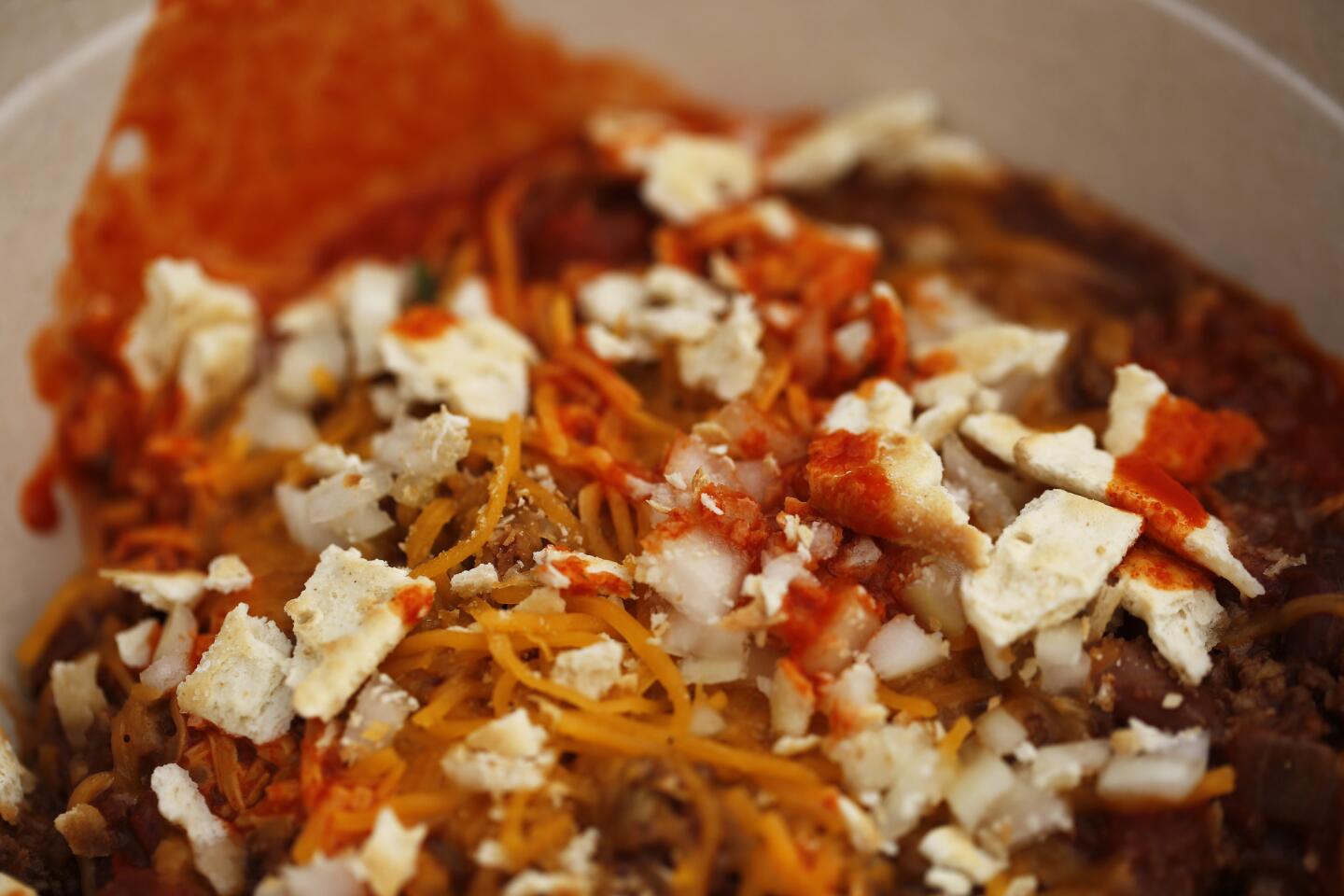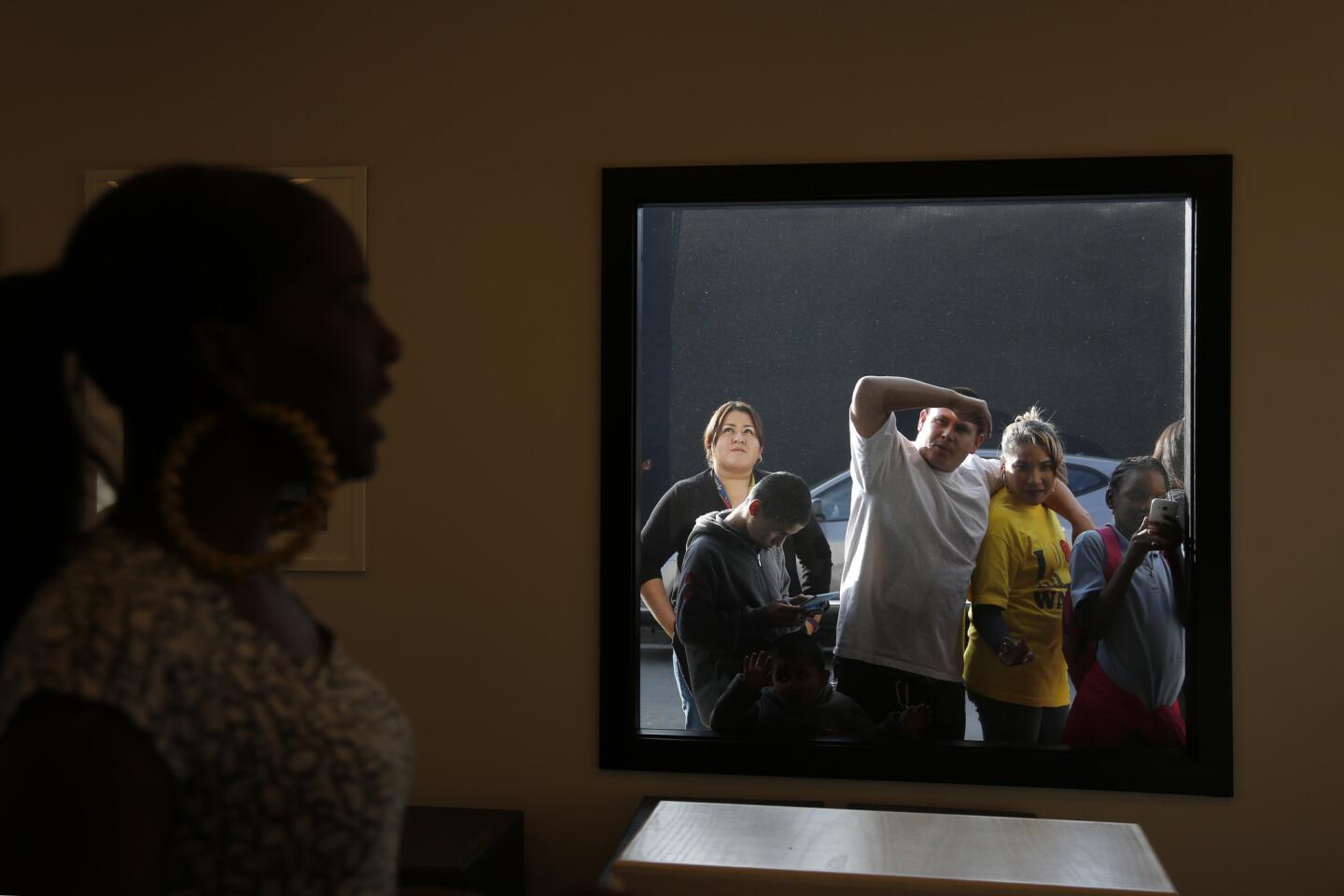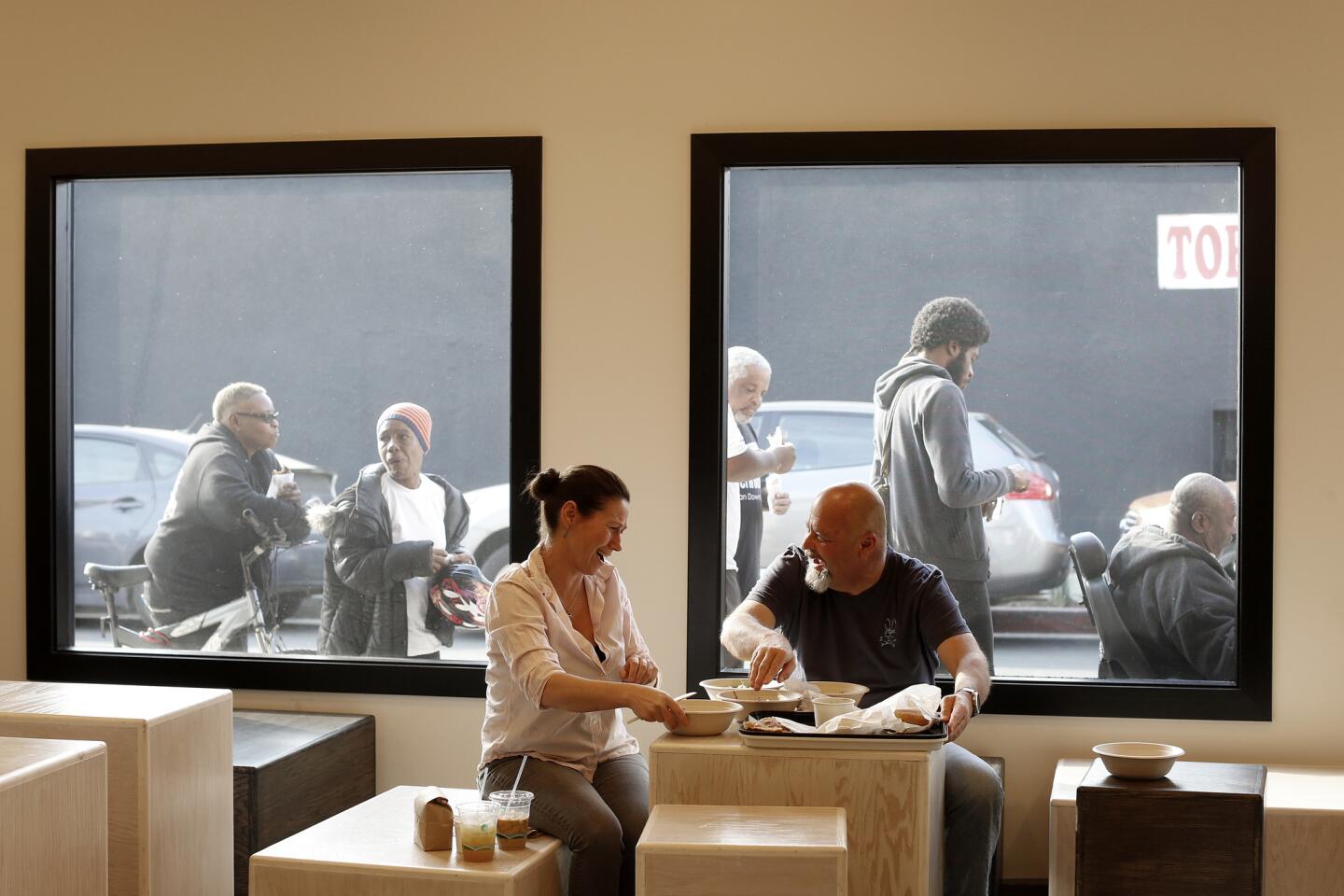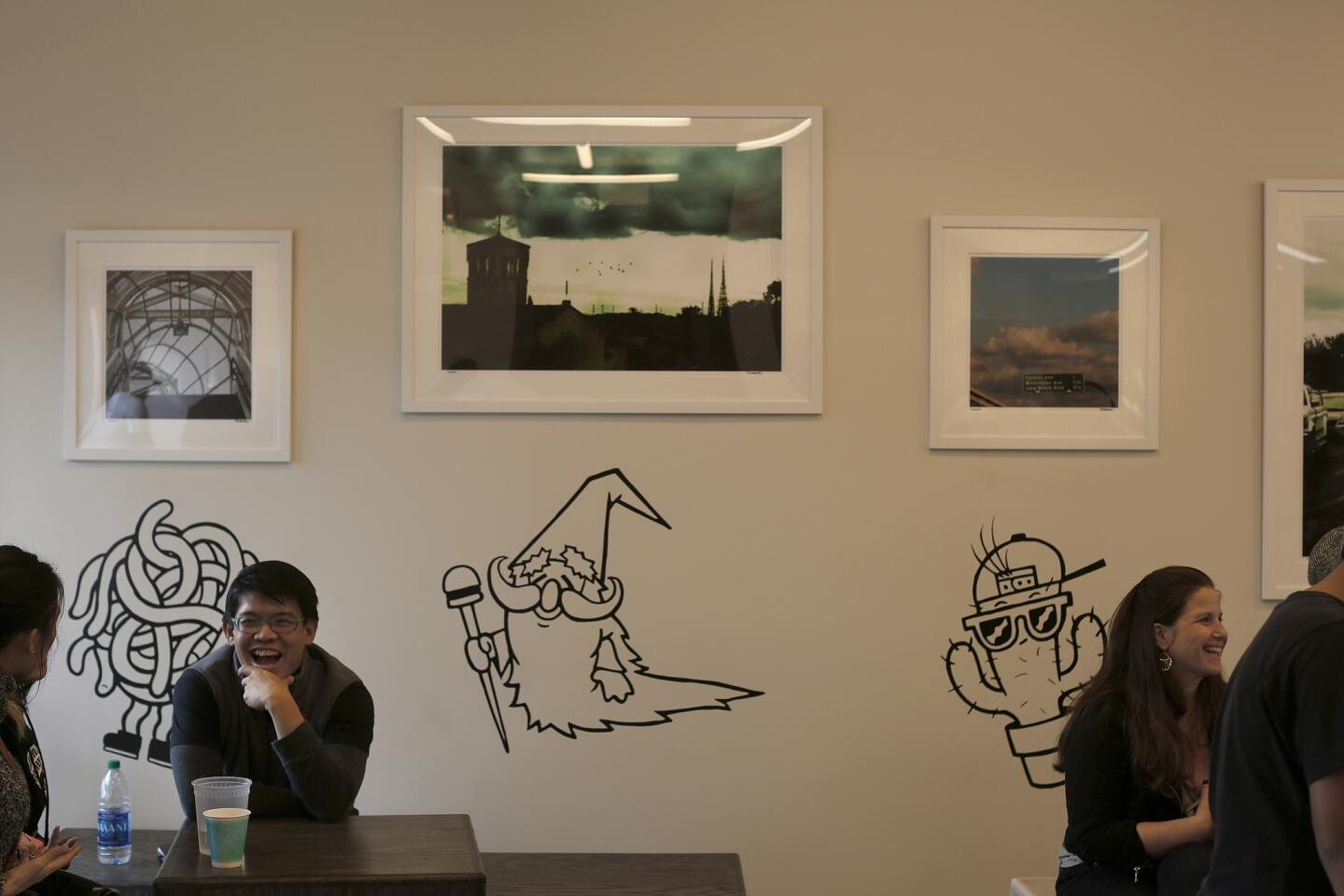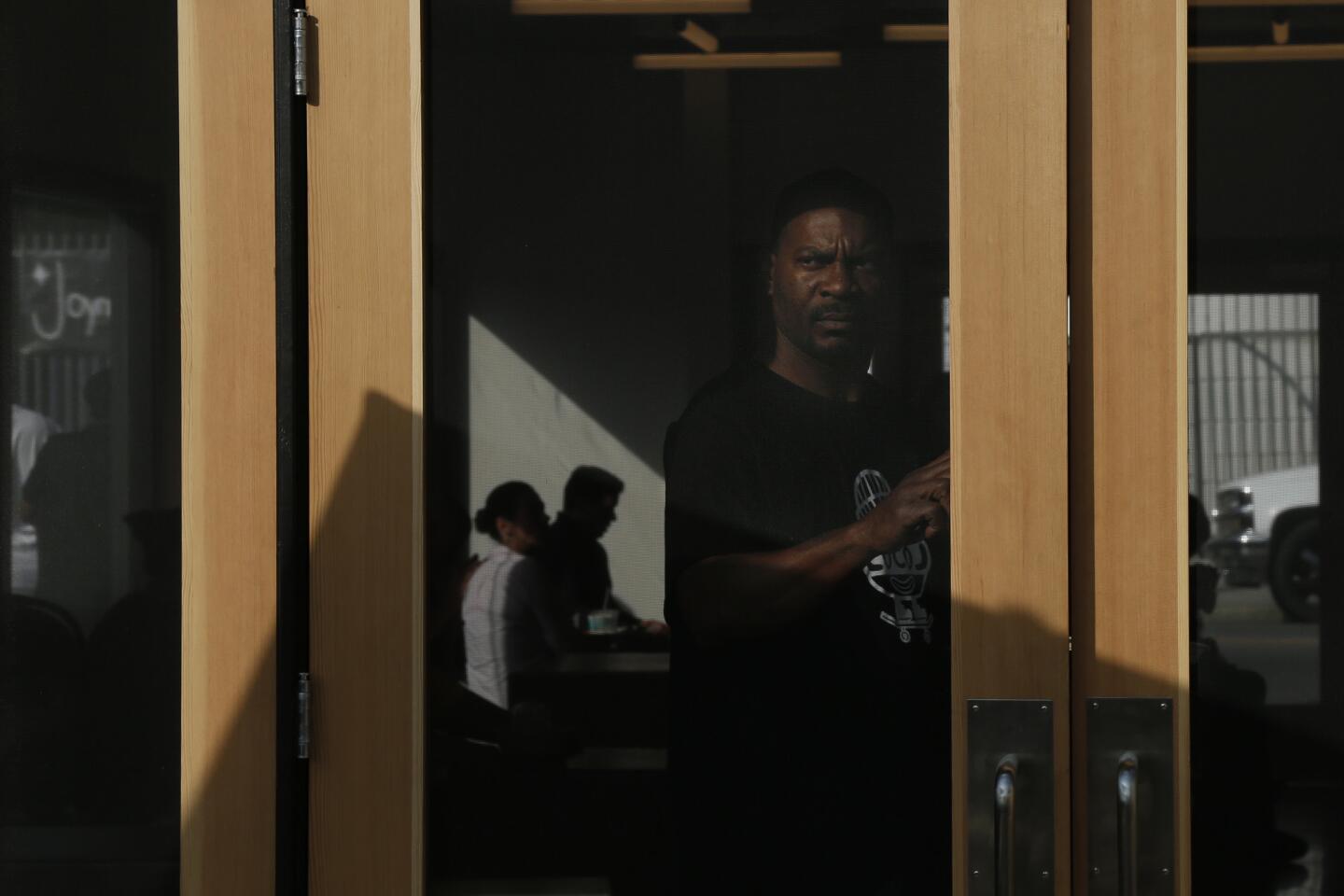After NYT pans Locol, Jonathan Gold wonders if some restaurants are unreviewable
If you’ve been paying attention to food media this last week, you’ve probably heard a lot about Pete Wells’ zero-star review of Locol in the New York Times last Wednesday, in which he compared the hamburger to something he’d once eaten at Boy Scout camp. The review was of the Oakland location, not of the original restaurant in Watts, but the food community, both in Los Angeles and around the world, seemed to take the review personally.
Protests sprang up on the usual gastroblogs. Chefs David Chang and Rene Redzepi expressed their dissatisfaction via subtweet. Michael Krikorian, who knew some of the Watts Locol employees from his days as a gang reporter (and is not incidentally the longtime boyfriend of Mozza’s Nancy Silverton), wrote an impassioned op-ed for this newspaper. Kogi auteur Roy Choi, who co-founded Locol with San Francisco chef Daniel Patterson, posted a shirtless, scowling screenshot from Tupac’s “I Ain’t Mad at Cha’’ video to Instagram, and the symbolism was lost on no one.
Wells is no stranger to controversy – his pan of Thomas Keller’s Per Se split the food world last summer – but this seemed different. Per Se is a restaurant built around a $325 tasting menu. At Locol, which Choi and Patterson designed to bring fresh, healthy, inexpensive cooking to the kinds of neighborhoods sometimes referred to as “food deserts,’’ you can feed a dozen people for the cost of Per Se’s Wagyu supplement alone.
The question wasn’t how Locol’s $5 Fried Chicken Burg might compare to the vastly better $9 fried chicken sandwiches at Night + Market Song or Oakland’s own Bakesale Betty. It was why the New York Times was using its main restaurant column to gripe about bland turkey chili in an Oakland burger stand whose mandate was to feed a community with limited access to good, nutritious food.
Wells is a fine writer and an unimpeachable critic. If he said the grain-enriched hamburger patty was dry, the patty was dry.
And given: The Watts original is in a neighborhood with few alternatives; the Oakland restaurant, which I haven’t visited, is on a gentrifying block near downtown. Locol’s mission may be less apparent when its dining area is within a few steps of taquerias and an Umami Burger. Context is important: I’m not sure what I would think of the Watts restaurant if it were located within a football’s toss of a decent brasserie.
But are certain restaurants unreviewable? It depends on the critic. (Have I reviewed Locol? I have not.) Wells might have concentrated on more conventional restaurants like Camino or Commis on his trip to Oakland, but in some ways, Locol is indeed too important to ignore.
I wrote a front-page story on Locol’s opening last January. In Food & Wine the same month, Kate Krader wrote “Locol is the Best New Restaurant of 2016.” Stories on the restaurant appeared everywhere from Rolling Stone to the Wall Street Journal to Daily Coffee News.
Currently Locol sits at 58 on the 101 Best Restaurants list: The loose, handmade cooking reminded me more of the lunch counters that dotted South Los Angeles when I was growing up in the area than it did anything I’ve ever picked up at a drive-thru window. It is one of the places, along with Guelaguetza and Mariscos Jalisco, where I try to take friends visiting from out of town.
The prospect of a baron of multicultural deliciousness like Choi joining forces with the Michelin-starred modernism of Patterson is intriguing in foodie terms alone. But while you might imagine that the involvement from high-profile chefs would result in a slick product, the food is closer to casual home cooking, inspired by its neighborhood rather than imposing itself on it.
Locol serves neither the coffee-roasted carrots nor the asparagus with buttermilk snow Patterson made when he ran the kitchen at Coi nor the blackjack quesadillas at Kogi and Chubby Pork Belly bowls for which Choi is known at his Chinatown restaurant Chego. The food is less an experiment in culinary creativity than it is an attempt to fashion sustainable, lower-fat, affordable versions of dishes already popular in the area it serves: burgers, pizza, chili and salad. The restaurant is staffed by people who live in the neighborhood, very few of whom worked in food service before Locol hired them. Locol is less a replacement for a fast-food restaurant than a better version of it, a place with a funky but high-design vibe, a bowl of rice and greens for the price of a bag of Cheetos. Choi is fond of calling Locol a revolution.
“It’s cool,’’ Wells messaged me Thursday. “But I tell you, if they want to start a revolution, they’ve got to do better than what they're serving in Oakland.’’
So should Locol fall in the same category as Homeboy Bakery or Venice’s Bread and Roses Café, or should it be criticized because it fails to come up to the standards of Kogi or Coi? It’s a difficult question. In my opinion, Wells may not have been wrong, but he was ungenerous.
Someday, if he'll allow me, I'd like to take Mr. Wells to Watts.
1950 E. 103rd. St, Los Angeles, www.welocol.com.
FOR THE RECORD
3:16 p.m., Jan. 9: This article refers to a low-cost bowl of rice and greens. The dish has no rice.
ALSO:
Jonathan Gold’s 101 Best Restaurant’s list
Read Jonathan Gold’s latest restaurant review
Now you can ask food critic Jonathan Gold for advice anytime
Eat your way across L.A.
Get our weekly Tasting Notes newsletter for reviews, news and more.
You may occasionally receive promotional content from the Los Angeles Times.
